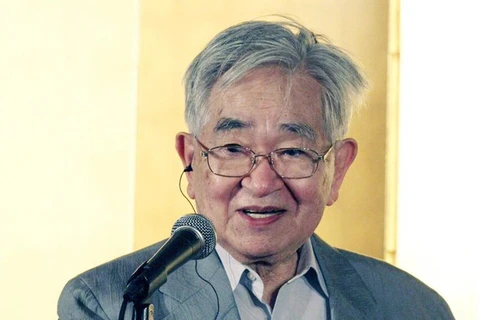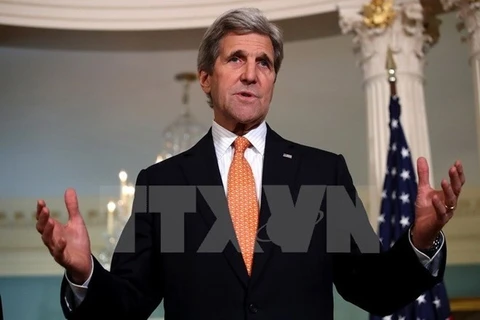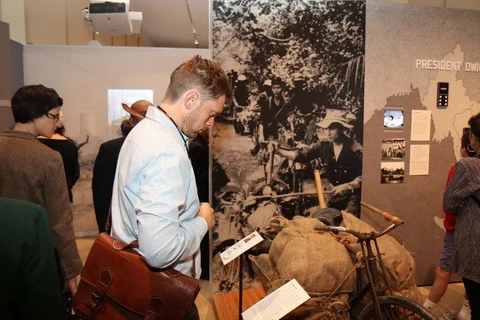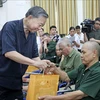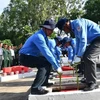 “Diary of Peace” tells stories on Vietnam’s heroic resistance war (1954-1975) (Photo: Organising Board)
“Diary of Peace” tells stories on Vietnam’s heroic resistance war (1954-1975) (Photo: Organising Board)
Hanoi (VNA) - An exhibition themed “Diary of Peace” will officially open at the Hoa Lo Prison relic site in Hanoi on July 2.
| Just 10 minutes from the Hilton Hanoi Opera Hotel in the heart of the capital city, Hoa Lo prison which gained a nickname: “Hanoi Hilton” is a must-see stop on any tour of Hanoi. Hoa Lo prison was built in Hanoi by the French colonialists in 1986 to keep Vietnamese political prisoners and revolutionists. It was used to detain US pilots by the Vietnamese Government in the 1964-1973 period. The relic site receives more than 100,000 visitors each year, 70 percent of whom are foreigners. From 1964 to 1973, Hoa Lo was used to keep US prisoners of war, including US Senator John McCain and the first US Ambassador to Vietnam Douglas Brian Peterson. During the 1990s, most of the prison was torn down to make way for an apartment, hotel and office tower complex. A part has been kept and turned into a museum. |
Vietnam’s heroic struggle for peace from 1954 to 1974 will be portrayed through keepsakes and photos of people involved and also stories told by themselves. The exhibition will be divided into three themes: “Escalation of the war”, “Desire for Peace” and “Message for tomorrow”.
The programme also welcomes veterans from the other side of the war, who were once captured at Hoa Lo prison.
“Diary of Peace” carries within itself Vietnam’s gratitude toward international friends, who fought for Vietnam’s peace regardless of nationalities and races.
During the war and after, they acted for peace and development in the country, healing the scars of the war and calling for world peace.
The exhibition shows various documents, photos, objects and newspapers showing the anti-war movements around the world as well as the aid offered to Vietnamese people during the war.
Visitors can see how people from France, the US, Japan, North Korea, Cambodia, Laos, Venezuela and Cuba marched in demonstrations in support for Vietnamese revolution. The banners say “let’s leave Vietnam”, “Stop the meaningless war”, “My son died in vain, don’t fight anymore”.
A space with banners and images capturing anti-war movements around the world moved many visitors, including US veteran Robert Chenoweth.
A representative of the Organising Board said: “Peace lovers across the world overcame geographical and language barriers to join hands to protest against the war that the United States had been escalating in Vietnam. Their disapproval is illustrated through numerous activities, including marching, organising demonstration and seminars, financial funding, blood donation, among others. A lot of stories within the ‘Diary of Peace’ were shared by historical witnesses, world activists in Vietnam during the Vietnam war and former Vietnamese Ambassadors to many countries.”
 “Diary of Peace” carries within itself Vietnam’s gratitude towards international friends, who have strived for peace in Vietnam (Photo: Organising Board)
“Diary of Peace” carries within itself Vietnam’s gratitude towards international friends, who have strived for peace in Vietnam (Photo: Organising Board) “It’s never too late for Peace; Hanoi – the City for Peace and Vietnam – destination of cooperation, friendship and peace” are messages expected to be delivered through the programme.
The “Diary for Peace” is organised by Hanoi’s Department of Culture and Sports in celebration of the 55th anniversary of Gulf of Tonkin incident (August 5, 1964 – August 5, 2019) and 20 years since the capital city was honoured as the City for Peace by UNESCO (July 16, 1999 – July 16, 2019)./.
| On August 2, 1964, the United States sent the destroyer USS Maddox to Vietnam’s waters. The General Staff and the High Command of Vietnam People's Navy directed the 135th Torpedo Squadron to send torpedo boats to chase the US Destroyer away from Vietnam’s water. The destroyer USS Maddox then withdrew to international waters. Three days later (August 5, 1964), the United States Air Force launched an operation coded “Operation Pierce Arrow”. The operation consisted of all-out attacks by 64 strike sorties of aircraft to Vietnam’s coast. The act started the destructive war against the North of Vietnam. |
